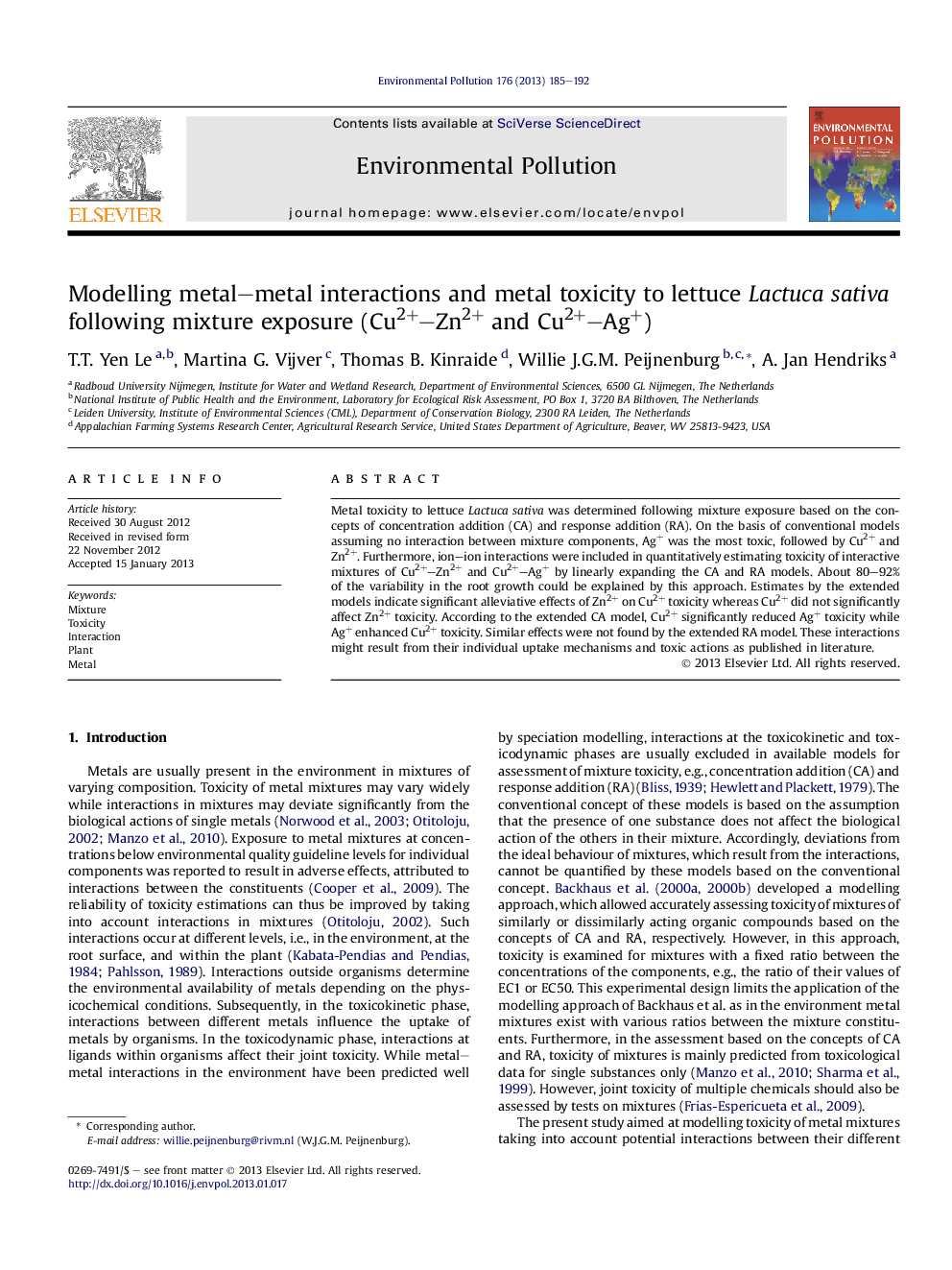| کد مقاله | کد نشریه | سال انتشار | مقاله انگلیسی | نسخه تمام متن |
|---|---|---|---|---|
| 4424529 | 1619196 | 2013 | 8 صفحه PDF | دانلود رایگان |

Metal toxicity to lettuce Lactuca sativa was determined following mixture exposure based on the concepts of concentration addition (CA) and response addition (RA). On the basis of conventional models assuming no interaction between mixture components, Ag+ was the most toxic, followed by Cu2+ and Zn2+. Furthermore, ion–ion interactions were included in quantitatively estimating toxicity of interactive mixtures of Cu2+–Zn2+ and Cu2+–Ag+ by linearly expanding the CA and RA models. About 80–92% of the variability in the root growth could be explained by this approach. Estimates by the extended models indicate significant alleviative effects of Zn2+ on Cu2+ toxicity whereas Cu2+ did not significantly affect Zn2+ toxicity. According to the extended CA model, Cu2+ significantly reduced Ag+ toxicity while Ag+ enhanced Cu2+ toxicity. Similar effects were not found by the extended RA model. These interactions might result from their individual uptake mechanisms and toxic actions as published in literature.
► Model toxicity of non-interactive mixtures by conventional concentration addition (CA) and response addition (RA) models.
► Model toxicity of interactive mixtures by extending the conventional CA and RA models.
► Predict interactions between different metals following binary mixture exposure.
► Provide possible mechanisms contributing to the interactions predicted based on modes of actions of single metals.
Journal: Environmental Pollution - Volume 176, May 2013, Pages 185–192